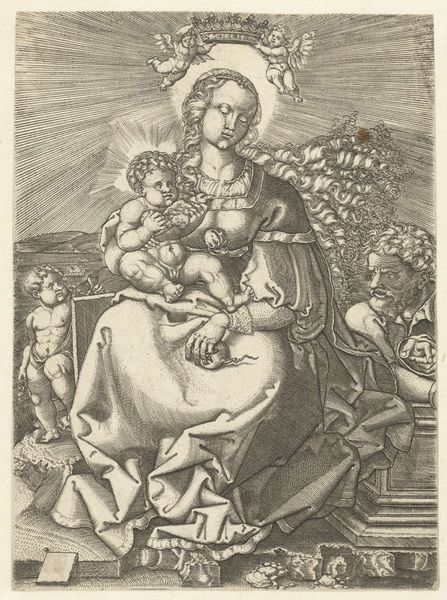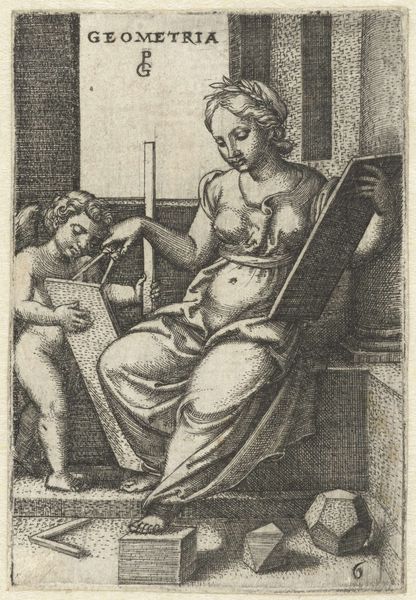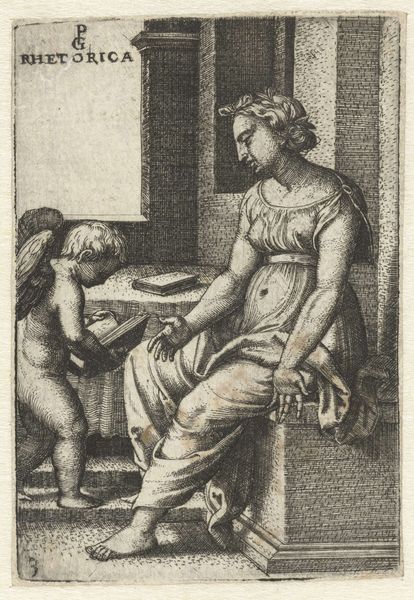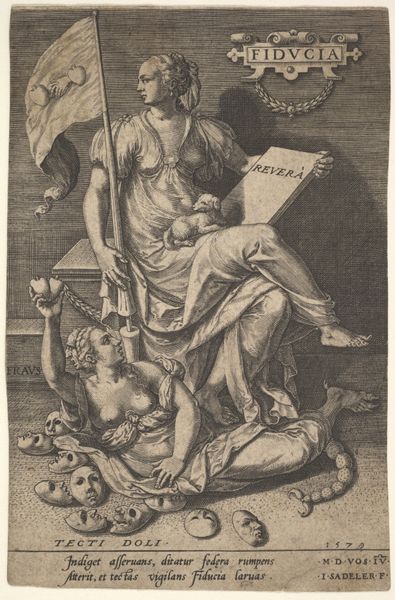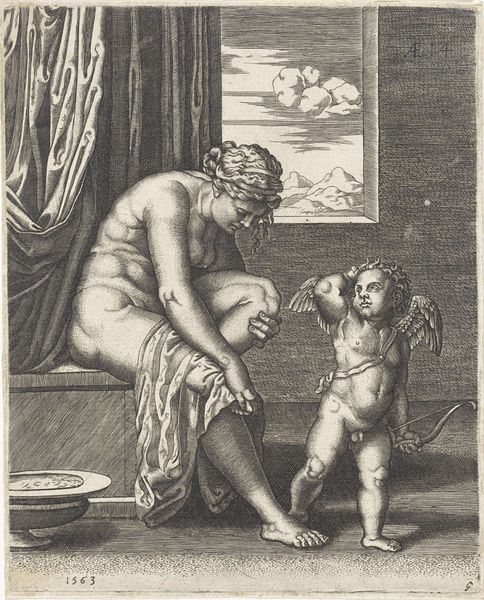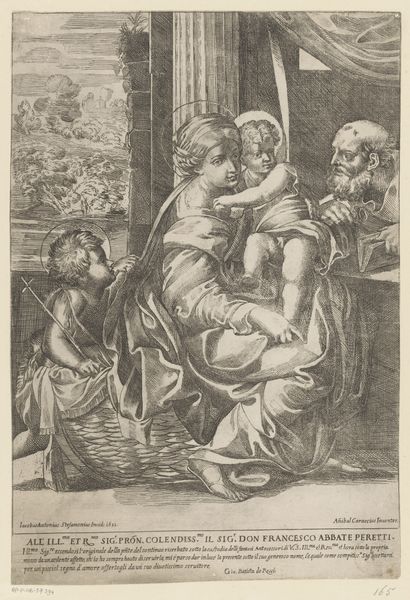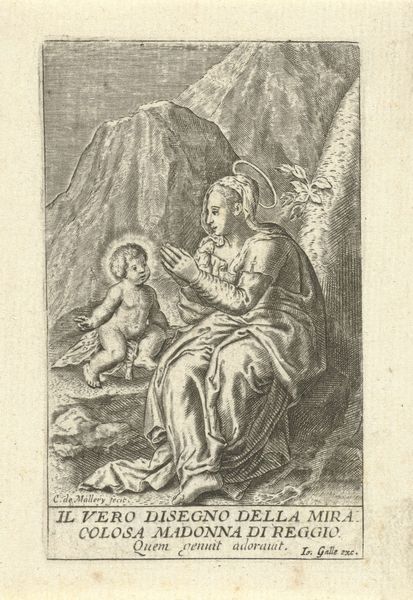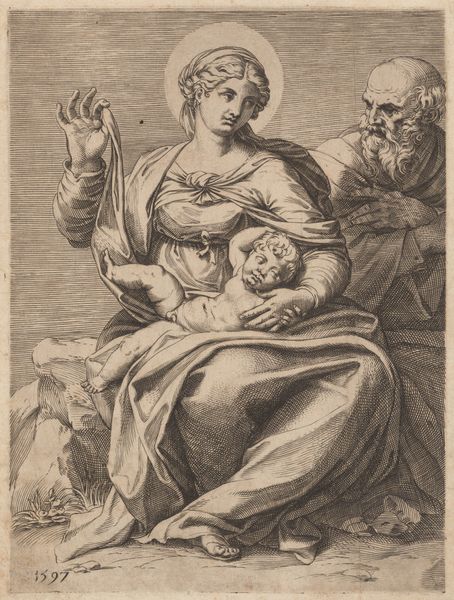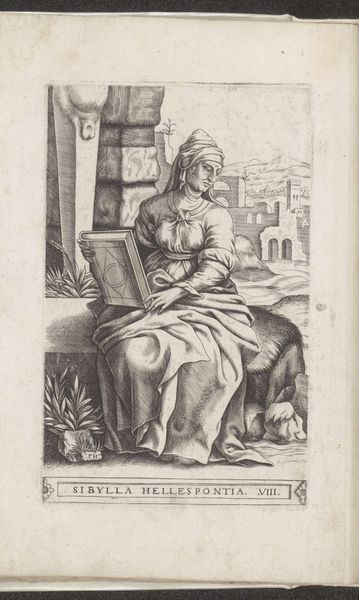
drawing, print, engraving
#
drawing
#
allegory
# print
#
figuration
#
11_renaissance
#
geometric
#
northern-renaissance
#
engraving
Dimensions: Sheet: 2 15/16 × 2 1/16 in. (7.5 × 5.2 cm)
Copyright: Public Domain
Editor: Here we have "Copy of Geometria," an engraving by Georg Pencz, sometime between 1536 and 1600. I’m struck by the detailed line work; you can almost feel the textures, even in this small print. The figure of Geometry seems so self-assured, surrounded by her tools. What’s your take on this piece? Curator: The engraving medium is crucial here. Consider the labor involved in producing this image—the painstaking process of etching the design onto the metal plate, in reverse, for mass production. Each impression, or print, extends that labor into circulation. The materials themselves—the paper, the ink, the metal plate—all carry the weight of production and distribution. Pencz, as a Northern Renaissance artist, operated within a network of workshops and patronage, blurring the lines between artisan and artist. Who consumed these prints, and what role did they play in disseminating knowledge during the period? Editor: So you're saying that even a print of an abstract concept, like Geometry, participates in a very concrete system of production and consumption? Curator: Precisely. It’s also important to observe how Pencz represents Geometry herself. Look at the tools she holds. They speak to a rising class of merchants and builders whose lives were practically dependent upon applied math. Consider the connection of geometry with architecture, and therefore patronage in civic projects. It's not just about ideal forms, but practical application, all grounded in materiality. Editor: That gives me a totally different perspective. I was so focused on the allegory, I missed the relationship to real-world applications and the printmaking process. Curator: It’s easy to do! By focusing on the materials and the conditions of production, we move beyond the symbolic and into a richer understanding of the artwork's place in the world.
Comments
No comments
Be the first to comment and join the conversation on the ultimate creative platform.

